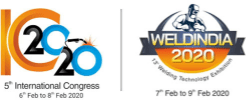Virtual Reality Automotive Training Industry
Transform automotive training with our exact Virtual Reality Automotive Training. Immerse trainees in lifelike simulations, fostering hands-on learning for an unparalleled educational experience in the automotive industry.






Skill Development and Digitization
With our VR AR training and simulations, you can ensure a highly specialized and result-oriented production process. Work with us to create better standards in your workforce, and take your employee efficiency to the next level.

Futuristic AR, VR, MR Simulations
Use our tools to develop cutting-edge skill development and transform your training processes. We offer effortless and immersive learning experiences for all your production needs.

Industry 4.0 Technology & Solutions
Simbott’s Skill Development integrated with Industry To give you a comprehensive view of all your training programs, tests, and evaluations. Improve workforce performance to reach the Industry 4.0 Standards
VR, AR, and MR Training Solutions for the Automotive Industry
Take your work to the next level by partnering with Simbott to achieve top-quality Training and Skill Development in the Automotive Industry. We offer a wide range of AR, VR, MR Simulations, and Industry 4.0 Solutions to transform your work into a seamless and flawless endeavor. Eliminate human error and defects by setting new standards of quality and training using our tools. Enhance the skill levels of all your workers, from engineers to technicians – we bring you the best platforms to Empower your Workforce to set new standards of excellence in the industry.
Manufacturing and Operations Training
- Use AR/VR solutions from Simbott to superimpose real-time digital data to create a Factory Digital Twin. Track each and every operation performed on the manufacturing line in real time, and optimize the production environment.
- Factory Digital Twin detects a change in efficiency, wear and tear of components, need for repairs by constantly monitoring the manufacturing line’s condition, giving live feedback. Pinpoint the exact location of the problem and make maintenance simpler while increasing the flexibility of your operations
- Reduce your Carbon Footprint with VR solutions for your company while reducing errors made during manufacturing.
- Quality of skills picked up by the trainees is far superior as compared to traditional methods
- Troubleshoot your system with our VR solutions – track the entire procedure and components of your manufacturing process. Detect an error whenever and wherever it occurs, immediately.
- Make repairing and servicing extremely easy. Identify the exact problems and condition of the components during troubleshooting and enable the problem solving procedure to be approached logically with our state-of-the-art VR tools.
Workforce skill and Emergency Safety Training
- Be prepared for any emergency with simulations and pre-production planning with our VR assistants and tools. Eliminate property damage, and resource exhaustion by relying on the safety and control given by our virtual reality solutions.
- Make sure your production process is completely safe and secure. With VR tools, you can get complete remote control over each and every part of your big idea.
- Eliminate high costs, inhalation hazards and industrial waste with an impactful alternative training method for coating and spray painting using a real paint gu while being assisted by critical parameter capturing, real time analysis and a 4D effect.
- Use our Portable Unit to reduce training costs, space requirement and increase productivity along with developing muscle memory.
- Develop interesting and interactive training simulators with the help of Virtual Reality to drive better experiential learning. Give your employees an immersive, hands-on training experience.
- Infuse your training process with our customizable solutions. Grow training programmes to include critical skills, testing, and evaluation for engineers and technicians.
Customer Centric Approach (Sales and Business Development) :
- Explore the wide array of options available, all at once and simplify your decision-making process
- Look through and experience the multiple accessories and add-ons offered by Simbott
- Don’t just read the technical specifications of your vehicle, actually see them and actually understand what happens when you bury the throttle or ease onto the brakes
- Watch power generation in the engine block transfer to the wheels via the transmission – make sure you capture every single detail about your product with our VR solutions
- Customers can have a full showroom experience without physically setting foot inside it
- Products in different configurations or trims can be explored by customers using VR / AR / MR tech to truly create a stellar buying experience.
Plan Your Prototyping with Research and Development
- Insights provided by VR/AR tech allow a far better study of new technologies that can be implemented in EV Development (Battery Pack Development, Torque Delivery Calculations, Motor Development, Wiring Layout, etc)
- Eliminate trial and error delays in your design process with Simbott’s customizable solutions for any type of production
- Entire prototypes can be built without making a single hardware component. Test design efficiency and monitor stress analysis and CFD simulations without a physical prototype.
- Create a Digital Twin of the product and configure it for immediate remote assistance easily with a wide range of options from Simbott
- Make training an efficient and safe process. VR training has the potential to provide a deep and ground-up understanding.
- Enable your team to handle high-risk and complex manufacturing processes with detailed and experience-based VR simulations.
Trust Simbott
At Simbott, we believe in the power of connection and harmony. An organisation that works well together, stays ahead.

Unstoppable RnD efforts
At Simbott, we never stop working at better solutions to constantly improve and upgrade your organization. Get access to all the data and information that you need to bridge the gap between your idea and the marketplace. Finetune your expertise to better your engineering, design, and performance processes.

5G - The Accelerator-In-Chief
Transform your training by giving wireless access and connectivity to all your workers using 5G, AR, Digital Twin Simulations, and much more. Step into the next era of skill development with high-tech solutions configured with remote control, all at your fingertips.

Envision The Future of Training
Infuse your training simulations with the Simbott promise of accuracy and efficiency. Let’s take the big leap towards hosting training for all parts of your workforce virtually, to create immersive and experiential learning programmes

Sharp Analytics Tools
Dive into data-driven understandings of the skill levels of your workers. Engage with data and information in an interactive manner to better your grasp on all parts of the manufacturing process.

Round-the-clock Service
With Simbott, you have access to 24/7 customer care for any and all of your problems. Talk to us to make your workflows smooth and accessible.

Let’s create tomorrow
We don’t want to create products that fit neatly into the status quo - we want to create tomorrow. Bold, innovative, and accessible is our goal for the future of the trades’ industry.
Gear up for the Industry 4.0 Skill Digitization and Development.
Invest in upgrading critical skills and talent with Immersive VR, AR, MR Training to build a smart organization. Click here for more Case Studies and Smart Solutions with Simbott
5 Benefits of Using AR VR In the Automotive Industry
- 1. Increased Efficiency:
One of the primary benefits of using AR/VR in the automotive industry is that it can help to increase efficiency. For example, automakers can use AR/VR to create virtual prototypes of new vehicles.
This allows engineers to test out different designs without having to create physical prototypes, which can save a lot of time and money.
Additionally, AR/VR can be used to create virtual assembly line simulations, which can help workers to learn how to assemble vehicles more quickly and efficiently.
- 2. Improved Quality:
Another benefit of using AR/VR in the automotive industry is that it can help to improve quality. For example, AR/VR can be used to create virtual simulations of assembly lines.
This allows workers to identify potential problems with the assembly process and make changes before any vehicles are actually assembled.
Additionally, AR/VR can be used to create virtual simulations of crash tests. This allows engineers to test out different designs and make changes to improve the safety of vehicles before they are actually built.
- 3. Reduced Costs:
In addition to increasing efficiency and improving quality, using AR/VR in the automotive industry can also help to reduce costs. For example, as mentioned above, VR can be used to create virtual prototypes of new vehicles.
This eliminates the need for expensive physical prototypes, which can save a lot of money. Additionally, VR can be used for training purposes.
This eliminates the need for expensive training facilities and equipment, as well as the need to pay instructors.
- 4. Improved Customer Experience:
Another benefit of using AR/VR in the automotive industry is that it can help to improve the customer experience.
For example, some dealerships are now using VR headsets to allow potential customers to test drive vehicles without ever leaving the dealership.
Additionally, VR can be used to create virtual showrooms that allow customers to explore vehicles in detail without having to physically travel to a dealership.
- 5. Increased Safety:
Finally, another benefit of using AR/VR in the automotive industry is that it can help to increase safety. For example, as mentioned above, VR can be used for training purposes.
This allows workers to learn how to operate machinery safely and perform tasks without putting themselves or others at risk. Additionally, VR can be used for safety inspections. This allows inspectors to identify potential hazards without having to put themselves in danger.
5 Advantages of Virtual Reality automotive industry
- 1. Cost-Effective:
Virtual reality is a cost-effective solution for the automotive industry as it allows companies to reduce the need for physical prototypes during the design process. Additionally, virtual reality can be used for training purposes, which can help to reduce the cost of employee training.
- 2. Increased Efficiency:
Virtual reality can also help to increase the efficiency of the automotive design process as it allows designers to quickly create and test different designs.
Additionally, virtual reality can be used to simulate real-world conditions, which can help engineers to identify potential problems with a design before it is put into production.
- 3. Improved Quality:
Virtual reality can also help to improve the quality of automotive products as it allows companies to test designs and components before they are put into production.
Additionally, virtual reality can be used to create realistic simulations of crashes and other accidents, which can help engineers to improve the safety of vehicles.
- 4. Greater Flexibility:
Virtual reality also offers greater flexibility when it comes to the design of vehicles, as it allows designers to create vehicles that would be impossible to build in the real world.
For example, virtual reality can be used to create concept cars that explore new design ideas or that push the boundaries of what is possible with current technology.
- 5. Enhanced Customer Experience:
Finally, virtual reality can also enhance the customer experience by allowing them to interact with a vehicle in a way that is not possible with traditional methods, such as looking at pictures or videos.
For example, some car manufacturers are now using virtual reality showrooms that allow customers to explore a vehicle in a realistic way before making a purchase.
Frequently Asked Questions
What is virtual reality automotive training?
Virtual reality (VR) is a computer-generated simulation of a three-dimensional image or environment that can be interacted with in a seemingly real or physical way by a person using special electronic equipment, such as a headset with a screen inside or gloves fitted with sensors.
Automotive training can refer to any training that helps someone gain skills related to working on or dealing with automobiles. It can cover topics such as learning how to drive, passenger safety, and car maintenance.
VR automotive training simulators provide a safe and controlled environment in which students can learn these skills without the risks associated with real-world experience.
What is a virtual car showroom?
A virtual car showroom is an online space where potential car buyers can browse and compare vehicles from the comfort of their own homes.
In many cases, virtual car showrooms offer a more comprehensive selection of cars than traditional brick-and-mortar dealerships, and they also tend to be updated more frequently.
Additionally, virtual car showrooms typically provide a wealth of information about each vehicle, including performance data, fuel economy estimates, and safety ratings. By making the car-buying process more convenient and informative, virtual car showrooms are changing the way that people shop for vehicles.
What is VR for Auto Showrooms?
Virtual reality is increasingly being used in a variety of industries, and auto showrooms are no exception.
By allowing potential customers to experience a car before it exists, VR provides an immersive way to view a product and can help to generate interest and excitement.
In addition, VR can be used to create customized showrooms for each individual customer based on their specific interests and needs. This allows customers to explore different options and get a more personalized experience.
As VR technology continues to evolve, it is likely that auto showrooms will continue to find new and innovative ways to use it.
Can people really learn to drive in VR?
VR has been increasingly used for training people in a wide range of tasks, from medical procedures to flying airplanes. But can VR really provide an effective way to learn to drive? Simulator studies have shown that VR can indeed be an effective tool for teaching people to drive.
In one study, participants who learned to drive in a VR simulator made 30% fewer errors on a subsequent real-world driving test than those who did not use VR.
The immersive nature of VR appears to be key to its effectiveness; by being placed in a realistic virtual environment, learners are better able to transfer their skills to the real world.
While more research is needed, the early evidence suggests that VR could be a valuable addition to driver’s education programs.
Does Augmented reality work for car repair?
While augmented reality is commonly used for gaming and entertainment purposes, there are a growing number of applications for this technology in other industries as well. One promising area for AR is car repair.
With AR, mechanics can have a virtual representation of the car’s engine appear before them, allowing them to see how the various parts fit together. This can be extremely helpful when troubleshooting engine problems or performing complex repairs.
In addition, AR can be used to provide step-by-step instructions for repairs, making it easier for mechanics to get the job done quickly and correctly. While AR is still in its early stages of development, it has great potential to revolutionize the car repair industry.
What is VR in the automotive industry?
Virtual Reality (VR) in the automotive industry refers to immersive digital environments that simulate real-world driving experiences. It’s used for design, prototyping, and training to enhance vehicle development processes and customer experiences.
What is automotive VR for training?
Automotive VR for training involves using virtual reality technology to simulate various training scenarios for automotive professionals, such as technicians and drivers. It enhances learning by providing realistic, hands-on experiences in a virtual environment, improving skill acquisition and safety awareness.
What is VR solutions for automotive?
VR solutions for automotive encompass a range of applications, including virtual prototyping, design visualization, and training simulations. These solutions leverage VR technology to enhance collaboration, streamline development processes, and provide immersive experiences for design evaluation, testing, and employee training within the automotive industry.
What is automotive virtual reality?
Automotive virtual reality refers to the application of VR technology in the automotive sector. It includes the use of immersive simulations for tasks like vehicle design, prototyping, testing, and employee training. This technology enhances efficiency, reduces costs, and improves the overall quality of automotive development processes.


















